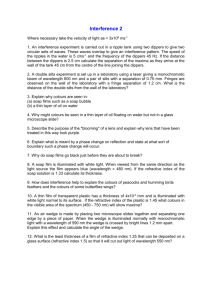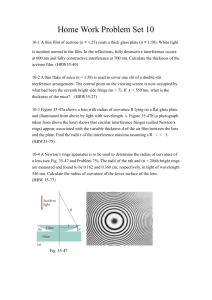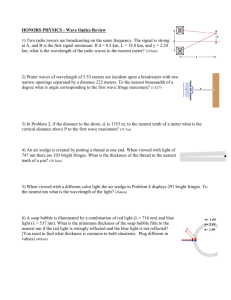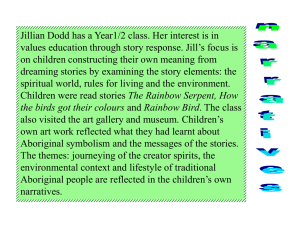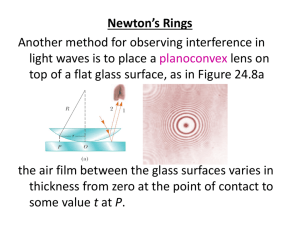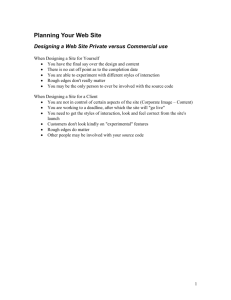The Beauty of Interference
advertisement
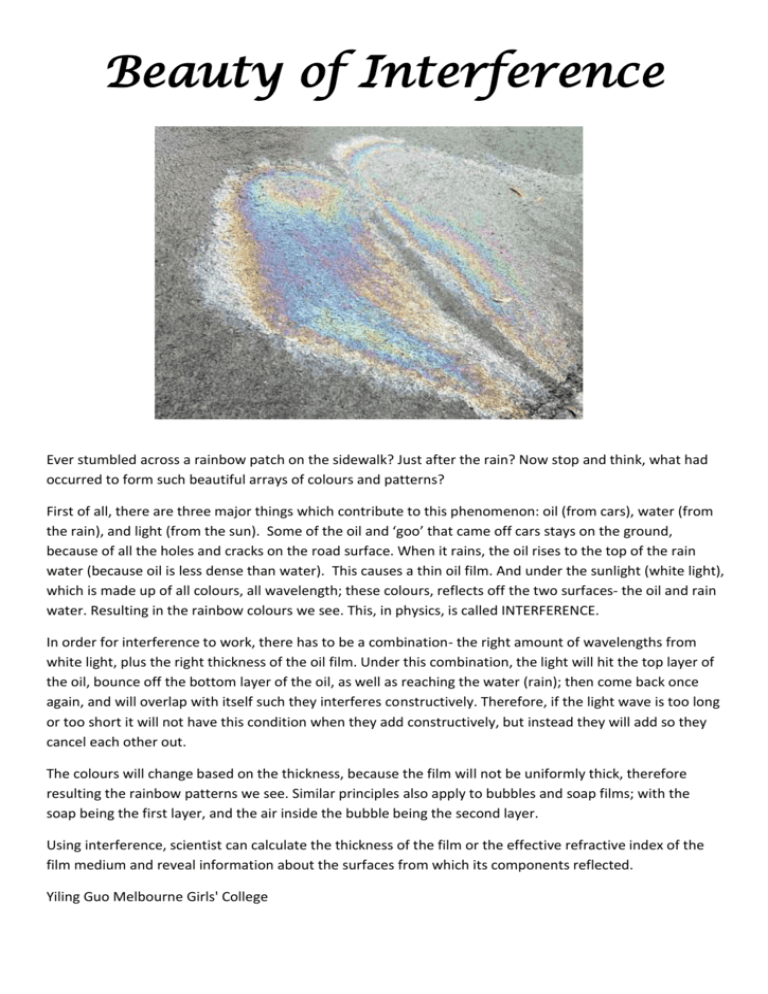
Beauty of Interference Ever stumbled across a rainbow patch on the sidewalk? Just after the rain? Now stop and think, what had occurred to form such beautiful arrays of colours and patterns? First of all, there are three major things which contribute to this phenomenon: oil (from cars), water (from the rain), and light (from the sun). Some of the oil and ‘goo’ that came off cars stays on the ground, because of all the holes and cracks on the road surface. When it rains, the oil rises to the top of the rain water (because oil is less dense than water). This causes a thin oil film. And under the sunlight (white light), which is made up of all colours, all wavelength; these colours, reflects off the two surfaces- the oil and rain water. Resulting in the rainbow colours we see. This, in physics, is called INTERFERENCE. In order for interference to work, there has to be a combination- the right amount of wavelengths from white light, plus the right thickness of the oil film. Under this combination, the light will hit the top layer of the oil, bounce off the bottom layer of the oil, as well as reaching the water (rain); then come back once again, and will overlap with itself such they interferes constructively. Therefore, if the light wave is too long or too short it will not have this condition when they add constructively, but instead they will add so they cancel each other out. The colours will change based on the thickness, because the film will not be uniformly thick, therefore resulting the rainbow patterns we see. Similar principles also apply to bubbles and soap films; with the soap being the first layer, and the air inside the bubble being the second layer. Using interference, scientist can calculate the thickness of the film or the effective refractive index of the film medium and reveal information about the surfaces from which its components reflected. Yiling Guo Melbourne Girls' College

